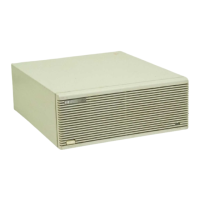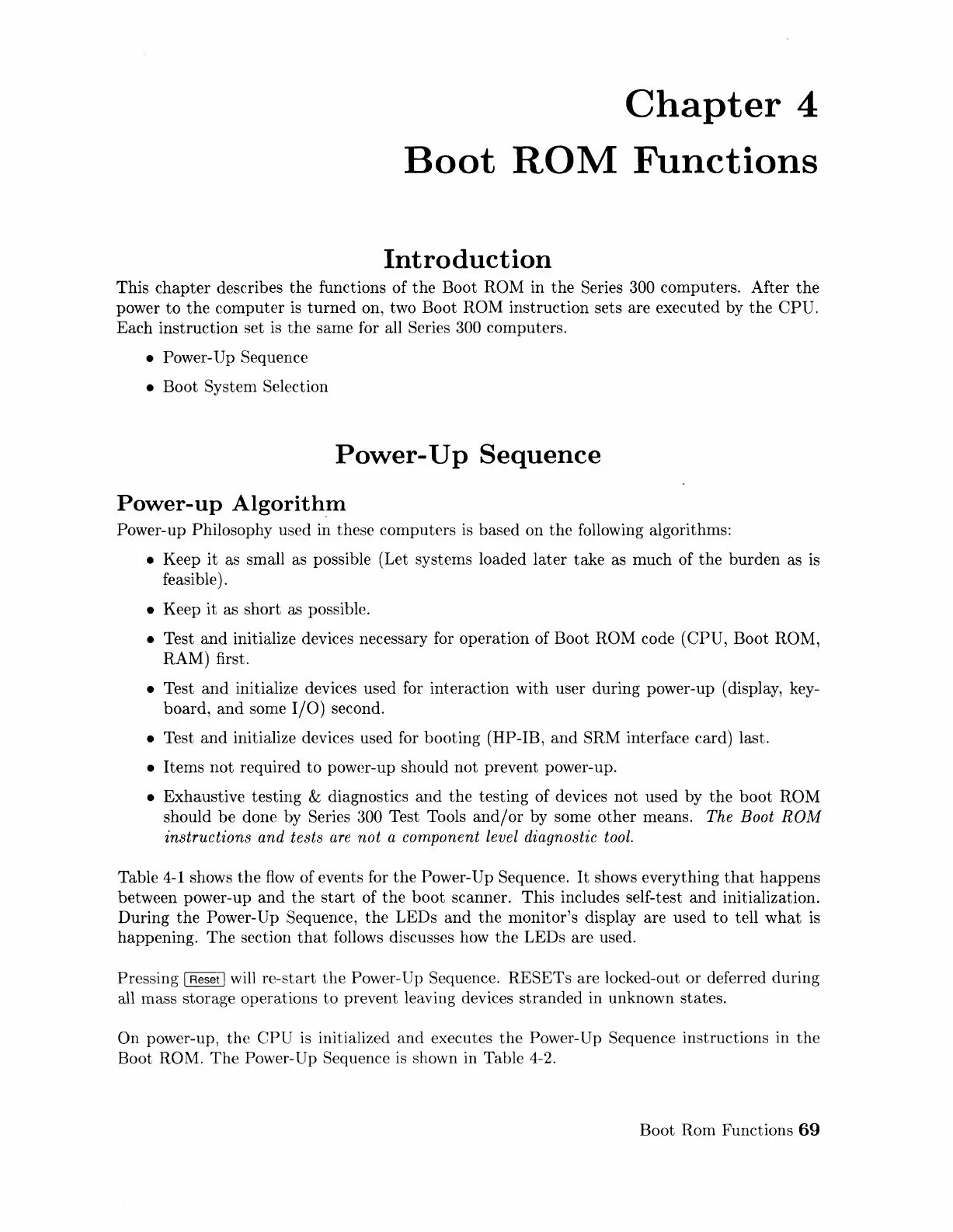Chapter
4
Boot
ROM
Functions
Introduction
This
chapter
describes the functions of
the
Boot ROM in the Series 300 computers. After
the
power
to
the
computer
is
turned
on, two Boot ROM instruction sets are executed by
the
CPU.
Each instruction set is
the
same for all Series 300 computers.
• Power-Up Sequence
•
Boot System Selection
Power-
Up
Sequence
Power-up
Algorith.m
Power-up Philosophy used in these computers
is
based on the following algorithms:
• Keep it as small as possible (Let systems loaded
later
take as much of
the
burden
as
is
feasible
).
• Keep it as short as possible.
• Test
and
initialize devices necessary for operation of Boot ROM code (CPU, Boot ROM,
RAM) first.
• Test
and
initialize devices used for interaction with user during power-up (display, key-
board,
and
some
I/O)
second.
• Test
and
initialize devices used for booting (HP-IB,
and
SRM interface card) last.
• Items
not
required
to
power-up should
not
prevent power-up.
• Exhaustive testing & diagnostics
and
the
testing of devices
not
used by
the
boot
ROM
should be done by Series 300 Test Tools
and/or
by some
other
means. The Boot
ROM
instructions and tests
are
not a component level diagnostic
tool.
Table
4-1
shows
the
flow
of events for
the
Power-Up Sequence.
It
shows everything
that
happens
between power-up
and
the
start
of
the
boot
scanner. This includes self-test
and
initialization.
During the Power-Up Sequence,
the
LEDs
and
the
monitor's display are used
to
tell
what
is
happening.
The
section
that
follows discusses how
the
LEDs are used.
Pressing
I Reset] will re-start
the
Power-Up Sequence.
RESETs
are locked-out or deferred during
all mass storage operations
to
prevent leaving devices
stranded
in unknown states.
On power-up,
the
CPU
is initialized
and
executes
the
Power-Up Sequence instructions in
the
Boot ROM.
The
Power-Up Sequence
is
shown in Table 4-2.
Boot Rom Functions
69
Artisan Technology Group - Quality Instrumentation ... Guaranteed | (888) 88-SOURCE | www.artisantg.com

